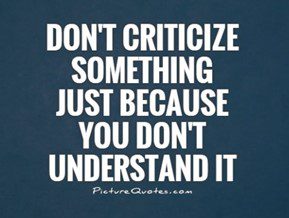If you have a health condition where you are misunderstood and perhaps judged by others for how you live your life to battle your symptoms, I invite you to read a wonderful story called The Spoon Theory, by Christine Miserandino, a woman with lupus. A friend asked her what it felt like to have lupus and she described it in a very clever way, which became famously known as The Spoon Theory.
It is very similar to what I experience with dystonia, a painful neurological movement disorder. We could replace lupus with dystonia, or most any chronic health condition in the The Spoon Theory story, and it would parallel many of our lives.
Although her lupus symptoms are noticeable to others, Christine also has fibromyalgia, Sjögren’s syndrome, and Reynaud’s disease, symptoms of which are pretty much invisible to the naked eye. Being the visual creatures that we are, if we do not see something that looks wrong, we assume a person is healthy.
When my mom had breast cancer almost 10 years ago, if you didn’t know it you wouldn’t think anything was wrong with her. She looked just as healthy the day before her diagnosis as she did right after her diagnosis. She just had something inside her that no one could see with the naked eye, so she appeared to have nothing wrong. Tests proved otherwise and thankfully she was successfully treated and cancer free ever since.
However, unlike other conditions that people are not as familiar, like dystonia, no one ever questions a cancer diagnosis or judges the person who has it. They not only accept it, but they do so with great compassion, as they should. With chronic pain, movement disorders, autoimmune conditions, etc., we are often challenged by people who question the validity of our condition, sometimes to the point of shaming us.
For years, my dystonia symptoms were such that it was obvious that something was wrong because my neck was locked in position towards my right shoulder due to constant, severe, involuntary muscle contractions as you can see below.
As I worked to improve my condition over the years, my symptoms became less obvious to where you can barely notice them anymore (see far right photo above and check out my video called Living well with Dystonia). However, just because my body looks better now does not mean that I am symptom free. A lot of people seem to think that since I often look fine, I must feel fine because it is hard to believe something exists when we can’t see it.
Even though you often can’t see it, I still have painful, involuntary muscle contractions, internal tremoring, pain, headaches, fatigue. and balance problems. For the past seven months, I have also been dealing with bad pain from a back injury, but you would never know that by looking at me. Granted, all of my dystonia symptoms are less severe than they once were, but they still exist to varying degrees. This is the case for many people with dystonia, chronic pain, and other conditions.
On occasion my symptoms will get bad enough where I have to do nothing all day but rest, often on heat or ice, and use some of my many self-help pain tools. Most people don’t see me when I am like this so their opinion of me is somewhat skewed. When I am having symptoms in public, most people don’t notice. I have become so used to them that I am able to hide them and appear quite normal, despite feeling quite uncomfortable.
Because people often don’t understand what it’s like to live with a chronic condition (most people are accustomed to getting sick and recovering in a short time) or think how we look is an indication of how we feel, we often hear thoughtless comments. Here are a few:
“It’s all in your head.”
“You’re just having a bad day.”
“Everybody gets tired.”
“You’re just depressed.”
“You’ll just have to tough it out.”
“If you would just get out more.”
“There are people worse off than you.”
“It can’t be that bad.”
“If you would just exercise more.”
While I truly believe that people are well intended, these opinions and comments often miss the mark when it comes to what we are experiencing. I wish people would be more sensitive and instead say something like, “I hope you feel as good as you look.” More important than anything though is how we process these comments.
We have to understand that unless someone lives with a chronic health condition or invisible illness, they have no idea what it is like. They can only relate it to some short-lived pain or other problem that went away or doesn’t disable them like dystonia and other conditions do for so many people. This is not a fair comparison, but for the sake of our health, we need to understand this and be very careful how much we let the opinion of others bother us. As we all know, any added stress can make our symptoms worse. Please be mindful of this the next time someone launches a thoughtless remark in your direction. They just don’t understand, and we must learn to be okay with this reality.










